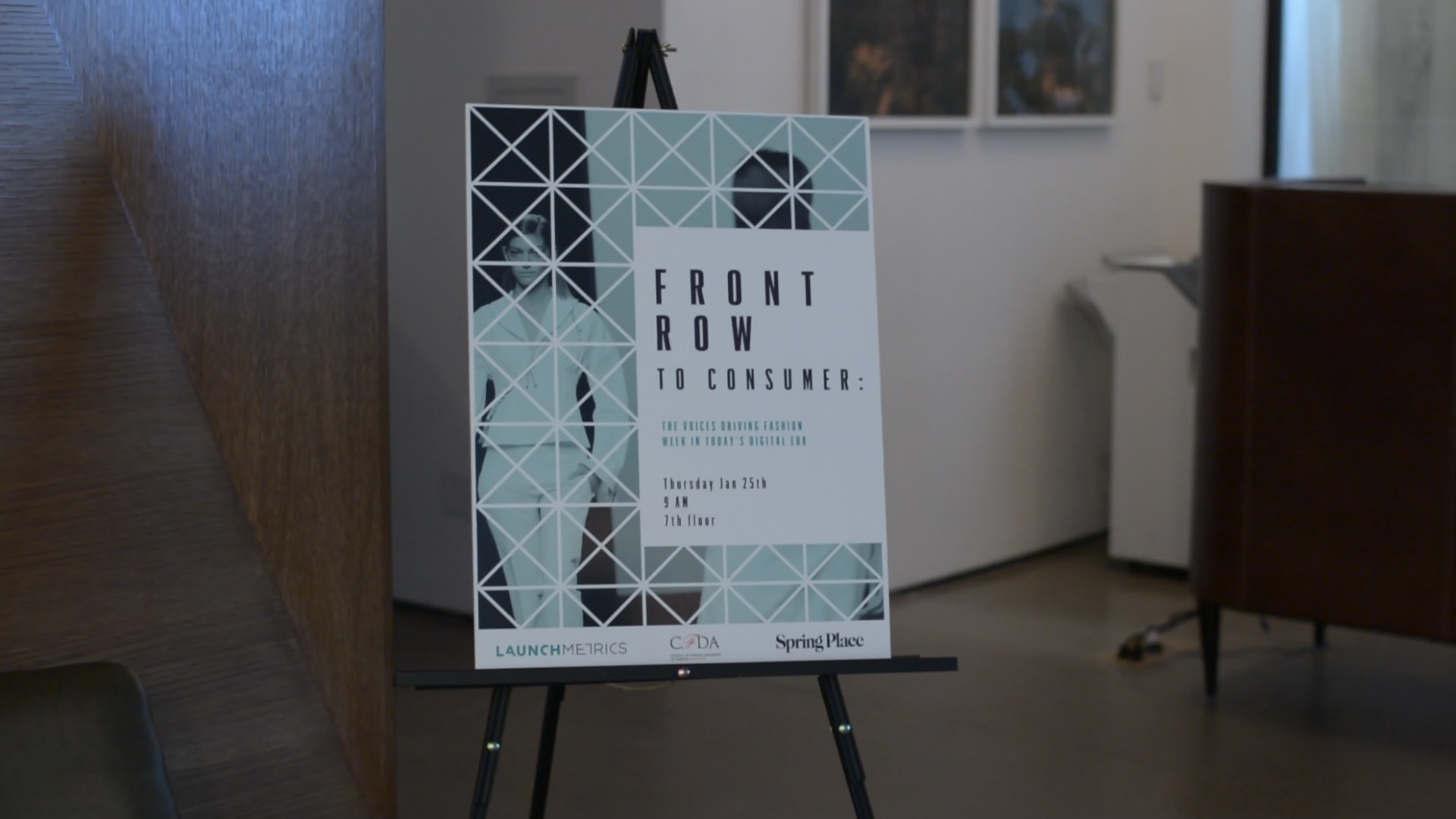With so many changes in the rapidly-evolving fashion and media landscape – news immediacy, designers going direct-to-consumer, combining women’s and men’s collections in one show, or moving to a different fashion capital – is there still value in the traditional runway show?
In a word, plenty. That’s the key finding in “Front Row to Consumer: The Voices Driving Fashion Week in Today’s Digital Era,” the new report by the CFDA and Launchmetrics released on Thursday. The report, which can be viewed here, makes the case for the relevancy of fashion shows in the age of social media, technology, and new voices who have joined traditional print media in covering fashion. For example, Launchmetrics found that some brands received 800 percent more mentions in the online and social channels during fashion weeks than in the entire year, reinforcing the value of fashion week.
On Thursday morning, Launchmetrics and CFDA launched the report at Spring Place with a panel featuring President and CEO Steven Kolb, Launchmetrics CEO Michael Jais, Alexander Wang Chief Strategy Officer Stephanie Horton and Elite World Group’s Co-CEO Chris Gay.
James Fallon, editorial director of Fairchild Media who oversees WWD, FN, Beauty Inc, Fairchild Live Media, moderated the panel.
The impetus for the study was an industry thirst for information and tools, according to Kolb, who said that fashion week and its value have been “under a lot of scrutiny.”
“For an industry that changes so frequently, the fashion week business model really hadn’t changed for decades,” he noted.
What influenced more recent change has been the advance of technology and immediate worldwide access to fashion in a way that was once only reserved to editors and buyers.
“The idea of selecting brands was to say, ‘there is not one path…not one way to be successful and that’s what the report shows,” said Jais.
Horton elaborated on the Alexander Wang strategy of turning your fashion show into mega-events. “You have to look at what the goal of your show is and why you are doing it,” she explained. “For Alex really the snow is to communicate the brand DNA to the consumer.”
Wang recently announced that he choosing to move his show schedule to December and June—a move that other younger brands have also been considering. Kolb believes that if successful, most brands could migrate to the new schedule, and New York Fashion Week could go through a shift the way it did in 1998 when Helmut Lang decided to show here before Europe, shifting the global fashion calendar.
With Proenza Schouler and Rodarte already showing during Paris couture as the dates better align with their selling schedule, “I wouldn’t be surprised if they come back to show in January and June,” Kolb said.
And amid all this, the power of influencers and celebrities is unlikely to wane.
“Talent becomes a conduit,” Gay said. “Our talent can create original content which their followers eat up and consume.” And that content, he added, is not paid but organic—bringing more value to the savvy millennial generation.
Brands, he added, can’t assume a model will naturally promote them on social media.
“It has to be authentic relationship for our talent and for the brand too,” Gay noted. “If you want to do something that really resonates… creating original content motivates talent to post.
“There has to be legitimate connection,” he added. “Young kids want to have information, and exclusivity comes from knowing it first.”
Designers, take note!



